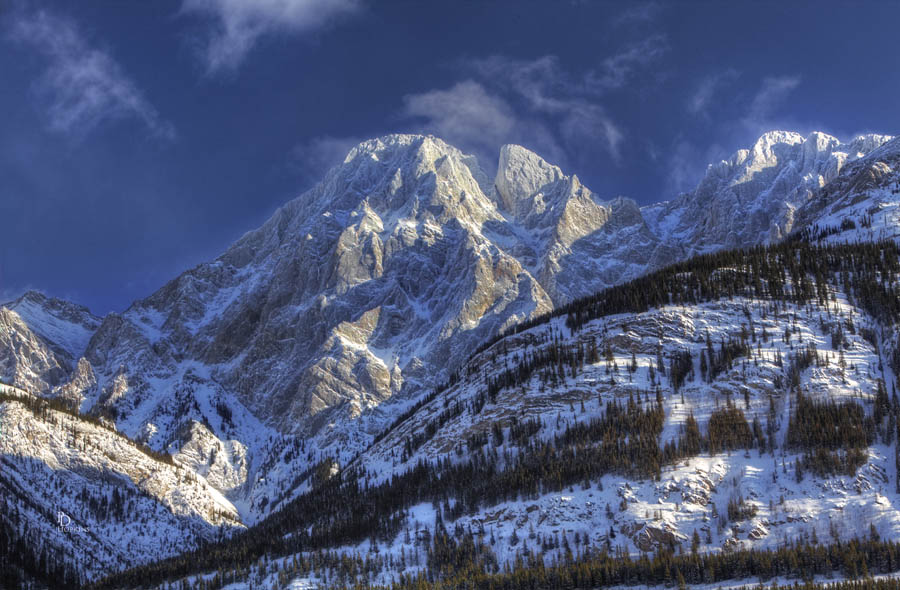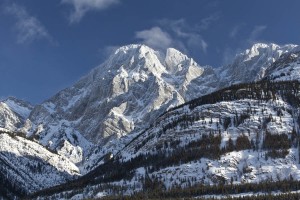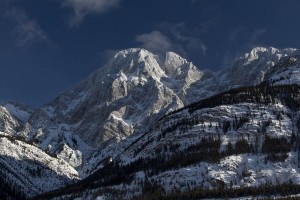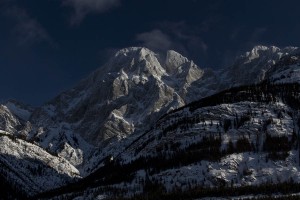In my last post, I included a picture of Mount Packenham, viewed up Hood Creek from highway 40 in Kananaskis Country. Just prior to arriving at the location for this shot, I had been at a position on the Smith-Dorrien Trail about 8.5 km from Mount Packenham. I took this next picture from that location and chose to post it today because I think it’s a striking scene. The light was exceptionally good and the atmosphere crystal clear. I particularly like the way the light plays on this peak’s rugged features and the patches of snow. A very pleasing mix of highlights and shadows.

If you are interested in how the final photograph above was produced, please read on.
I used a telephoto lens at a focal length of 75 mm to take three bracketed exposures. That’s three shots in rapid succession, identical except for the exposure. I was able to do this without the aid of a tripod because the excellent light enabled the camera to get all three in less than a second (Even I can hold the camera steady for that long!). The exposures were set to be 1 f-stop apart, capturing the full dynamic range of the scene. That is, the full range of light intensity from very dark to very light. The entire range cannot necessarily be captured in a single exposure, but you can choose the exposures for each of the three to cover that range. That’s it for what you can do with the camera.
The next step in producing this picture, referred to as a high dynamic range image (HDR) is combining the three raw exposures using specialized software. The resultant picture that you see above has a superior dynamic range to that of the component images, below.



As you can see, the component images are arrayed from slightly over-exposed (Ev=+.33) to quite under-exposed (Ev=-1.67). The first image (Ev=+.33) does a good job of exposing the darker areas of the foreground, but loses contrast in the lighter areas of the sunlit rock and snow. The last image (Ev=-1.67) is simply too dark, obscuring definition in the darker areas. Even the middle image (Ev=-.67) does not give an ideal balance between the dark and light areas of the photograph. It’s not what you see with your eyes; your eyes are a better tool for perceiving dynamic range than a camera.
Of course the appeal of any photograph is in the eye of the beholder. There are many photographers who prefer a traditional look with greater extremes between light and dark. That look can be very appealing and many great photographers have used it advantageously. HDR in its extreme can be very dramatic, a look that has become an art form in itself. There is an entire spectrum in between. My preference with landscapes is to produce a picture that most closely reflects what I saw. Sometimes I can best achieve that with a single exposure; on other occasions, HDR can be a useful tool to get the desired result.

That’s neat, Pete! Final result is spectacular!